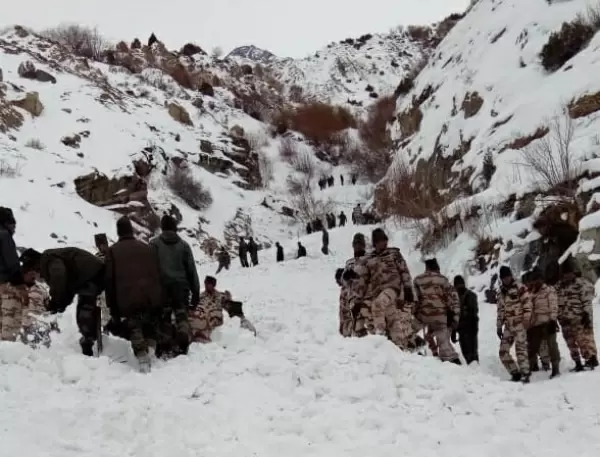Do we need 2nd Mountain Strike Corps for China border?
SUMAN SHARMA
| New Delhi
13-October-2020

Photo: IANS
The very first China-centric Mountain Strike Corps (MSC) which was envisaged a decade ago had its blueprint rolling in 2013 with an initial raising cost of approximately Rs 65,000 crore. But with the India-China border standoff entering its sixth month now, experts are talking about the requirement of a second MSC for China.
There are mixed voices from military experts about the need for a second MSC.
Former governor of Arunachal Pradesh and Army Chief J.J. Singh is of the opinion that a second mountain strike corps is a need of the hour, "This was a well thought out strategy. In fact Panagarh was chosen as headquarter of the MSC during my time and Pranab Mukherjee was the Defence Minister then. What is effective at the Ladakh Line of Actual Control (LAC) is not effective at the McMahon Line The terrain and conditions are separate, therefore physical challenges are different, hence different kind of capabilities are required. About costs, we are a big country, and we have to defend our borders This is a large unresolved border approximately 4,000 kms, and at some places it merges with Pakistan. Thinking of expenditure at the cost of losing sovereignty is not a wise idea."
However not all senior military experts support the idea and rather back modernization over manpower.
Former General-Officer-Commanding of the Srinagar-based 15 Corps Lt-Gen Satish Dua says, "Force structures are decided by operational requirement which depends on threat analysis, which in turn is a function of terrain and force application. Plains and deserts can't be compared with mountains. It is not about number of forces arrayed against an adversary. Forces are adequate, we need to modernize them more. Capability building is more important than bean count."
Former Northern Army Commander retired Lt-Gen D.S. Hooda opines the same line of thought, "There should be more enhanced capability, more fire power, better infrastructure, radar surveillance, electronic warfare and cyber capabilities rather than more boots on ground. There is a cost to it, therefore having greater fighting capabilities rather than additional soldiers is a better idea."
Watch This TWL Video
Major General B.K. Sharma, Director, United Service Institution of India, however, differs and argues for an optimum mix, "While theaterization is the long term solution, but in the interim, besides additional forces for Eastern Ladakh, we need two MSC -- one for Ladakh and Middle Sector and another for the Eastern command."
Sharma adds: "However, any force structuring and development should have an optimum mix of boots on ground and high-end technology. The new strike corps must be equipped with optimum ISR, long range targeting platforms, high mobility transportation means, EW, AD and dynamic logistic support capabilities to operate in super high altitude terrain on sustained basis, as PLA enjoys significant competitive advantage in the technologically empowered Rocket Force and Strategic Support Force."
A second Corps would be considered wishful as the present MSC, raised for an offensive role, has remained unfinished due to fund-crunch. A second one would be in the same mould, hench it is imperative to calculate costs.
A three-star officer offers a cost-effective solution, "Composite Brigades with support elements in permanent positions can be used as a modular concept. These composite brigades can be deployed within a short duration. The Chinese PLA follows this concept which they call the Combined Arms Brigade. A composite brigade with fighting elements from all arms permanently together is easier to deploy as it trains together and has a common command and control. A more modernized army compared to a manned army is the need of the hour. This has been tried successfully by the Indian Army in the form of the Integrated Battle Groups (IBG)."
A composite brigade concept was tested in 2019 by the then Army Chief General Bipin Rawat in the form of IBG in a training exercise in the eastern sector with the aim to ratify quick mobilization and launching an offensive in the high altitude mountainous terrain, as the 17 Corps though headquartered in the East, is responsible for the entire 4,000-kilometer India-China border which includes the eastern McMahon Line in Arunachal Pradesh and the LAC in Ladakh. The three IBGs anticipated under the 17 Corps are equivalent to a Brigade in manpower and capability, aimed at striking swiftly and launching controlled offensives in high altitude.
(This content is being carried under an arrangement with indianarrative.com) - IANS
More Headlines
PM Narendra Modi Makes Podcast Debut with Nikhil Kamath on 'People By WTF'
Laundry Startup Revivo Secures Pre-Seed Funding For Expansion
Bajrang Dal Appeals to Ban Oyo Check-Ins for Unmarried Couples in Bengaluru
Heavy Rains Predicted In Five TN Districts On January 11
Cold Wave Grips Rajasthan: Fatehpur Hits 1.1°C, Nagaur 1.7°C
PM Narendra Modi Makes Podcast Debut with Nikhil Kamath on 'People By WTF'
Laundry Startup Revivo Secures Pre-Seed Funding For Expansion
Bajrang Dal Appeals to Ban Oyo Check-Ins for Unmarried Couples in Bengaluru
Heavy Rains Predicted In Five TN Districts On January 11
Cold Wave Grips Rajasthan: Fatehpur Hits 1.1°C, Nagaur 1.7°C










